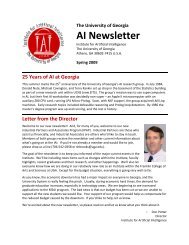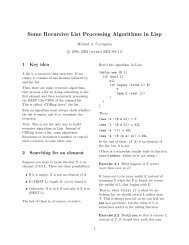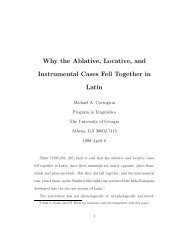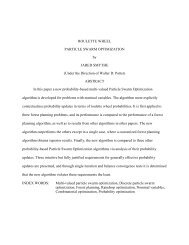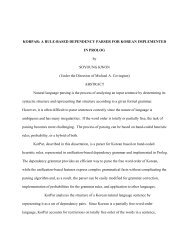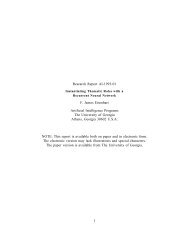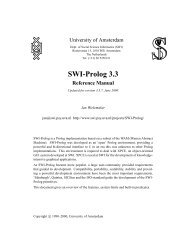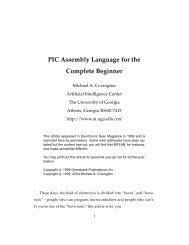human judgment in diagnosing problem behavior in horses using
human judgment in diagnosing problem behavior in horses using
human judgment in diagnosing problem behavior in horses using
You also want an ePaper? Increase the reach of your titles
YUMPU automatically turns print PDFs into web optimized ePapers that Google loves.
CHAPTER 5<br />
SYSTEM DEVELOPMENT<br />
This chapter describes the implementation of Knowledge-Based Horse Diagnosis System<br />
(HDS), which began with system specification, functional and non-functional<br />
requirements. LPA W<strong>in</strong>-Prolog programm<strong>in</strong>g language was used <strong>in</strong> the development of<br />
the system that consists of a database of facts and logical relationships (rules). The rules<br />
describe the relationships, which hold for the given application. The system will <strong>in</strong>teract<br />
with the user, ask<strong>in</strong>g questions to establish <strong>in</strong>formation that is needed to execute the<br />
rules.<br />
5.1 System Specification<br />
The HDS performed horse <strong>behavior</strong> analysis; causes, visual cues and environmental cues<br />
to develop skills and knowledge for the users. Most system developers were emphasized<br />
on the importance of knowledge-based diagnosis system as a medium.<br />
5.1.1 Functional Requirements<br />
The functional requirements of HDS were to (a) capture and analyze the horse’s<br />
<strong>behavior</strong>, (b) scan the facts and logical relationships (rules) of horse <strong>behavior</strong>, (c) locate<br />
and identify the causes, visual cues, and environmental cues, and (d) <strong>in</strong>teract with users<br />
36






